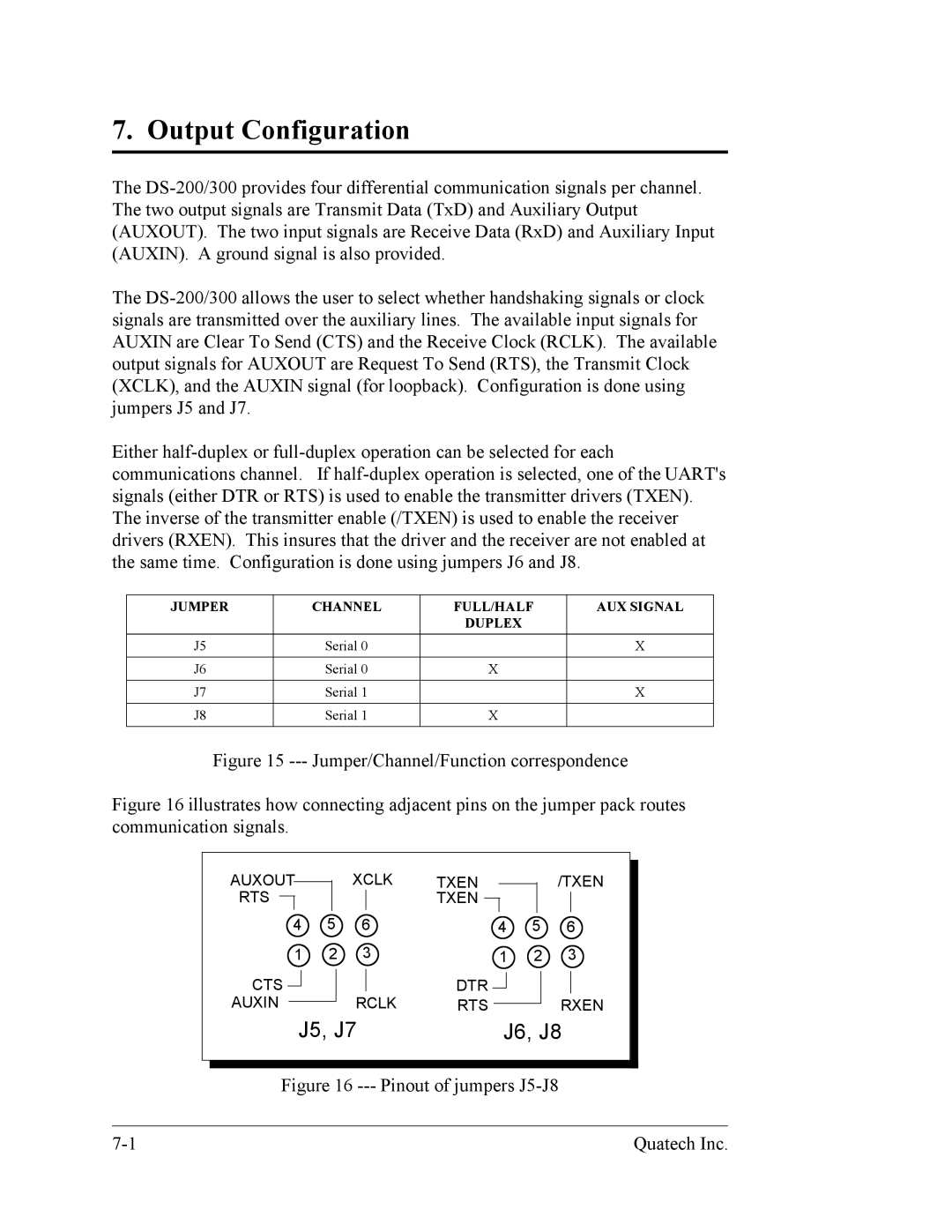
7. Output Configuration
The DS-200/300 provides four differential communication signals per channel. The two output signals are Transmit Data (TxD) and Auxiliary Output (AUXOUT). The two input signals are Receive Data (RxD) and Auxiliary Input (AUXIN). A ground signal is also provided.
The DS-200/300 allows the user to select whether handshaking signals or clock signals are transmitted over the auxiliary lines. The available input signals for AUXIN are Clear To Send (CTS) and the Receive Clock (RCLK). The available output signals for AUXOUT are Request To Send (RTS), the Transmit Clock (XCLK), and the AUXIN signal (for loopback). Configuration is done using jumpers J5 and J7.
Either half-duplex or full-duplex operation can be selected for each communications channel. If half-duplex operation is selected, one of the UART's signals (either DTR or RTS) is used to enable the transmitter drivers (TXEN). The inverse of the transmitter enable (/TXEN) is used to enable the receiver drivers (RXEN). This insures that the driver and the receiver are not enabled at the same time. Configuration is done using jumpers J6 and J8.
JUMPER | CHANNEL | FULL/HALF | AUX SIGNAL |
| | DUPLEX | |
J5 | Serial 0 | | X |
| | | |
J6 | Serial 0 | X | |
| | | |
J7 | Serial 1 | | X |
| | | |
J8 | Serial 1 | X | |
| | | |
Figure 15 --- Jumper/Channel/Function correspondence
Figure 16 illustrates how connecting adjacent pins on the jumper pack routes communication signals.
AUXOUT | | XCLK | TXEN | | /TXEN |
RTS | | | TXEN | | |
4 | 5 | 6 | 4 | 5 | 6 |
1 | 2 | 3 | 1 | 2 | 3 |
CTS | | | DTR | | |
AUXIN | | RCLK | RTS | | RXEN |
J5, J7 | J6, J8 |
Figure 16 --- Pinout of jumpers J5-J8

